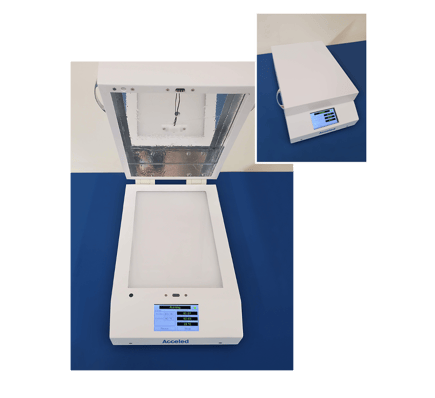Gain More Control in Research of Complex, Small Molecule Interactions
Technological Advances in Photochemistry
Photochemistry is an increasingly popular technique among organic chemists looking to advance drug discovery, diagnostic and genetic research. Yesterday’s photoreactors have proven inadequate at producing accurate and repeatable results in experimentation – requiring organic chemists to create homemade setups. While some have been successful, sophisticated research labs demand more from their photoreactors:
- Reliable, publishable data
- Less lab time
- Versatile instrumentation that maximizes lab budgets
- Faster time to results
New photoreactor systems fill the performance gap that previous models and homemade setups cannot meet. Today’s system features give researchers far more control over the parameters of their experiments, leading to more accurate and repeatable results than ever before. In this article, we’ll detail the factors that impact repeatability, and the resources researchers have to meet their needs.
Factors Impacting Repeatability
Ease of Setup
Often, the light sources and equipment used in photochemistry are not readily available. Researchers have instead turned to homemade setups which can be time-consuming to put together. Because homemade setups are not standardized, there is often variability in lab setups – leading to inconsistent and inaccurate results. These setups are often bulky and require a mix of different parts to create an effective instrument.
New photoreactor systems, like the cLight, have a huge advantage over homemade setups based on their ease of use. Interactive touch screens allow researchers to establish and change research parameters at the push of a button. Many also combine their LED illumination and cooling systems into a single device, removing the need to do so in separate pieces. Because new systems combine these features into a single device, they take up less laboratory space than a homemade setup.
Multi-plate Capability
Homemade photoreactors struggle to achieve and maintain uniform distribution of the LED light across the illumination plate when comparing different samples. In new systems, the light intensity across the full area of the illumination plate does not vary, it is completely uniform. This allows researchers to irradiate multiple growth plates with varying samples simultaneously under consistent LED light; there is no need to monitor where each plate is placed on the illumination panel, they will all receive the same intensity of light. This enables accurate comparisons of results from different sample plates and highly repeatable results.
Radiating multiple plates is clearly far more efficient than radiating a single plate at a time. However, new photoreactor systems also have the benefit of having stronger illumination systems. Faster radiation on multiple growth plates brings researchers efficiency far beyond that of homemade setups.
Programming
Often, organic chemists need to control for different variables in their cellular catalysis applications. Not being able to do so consistently across all samples can be detrimental to research. Homemade photoreactor setups can often lead to unreliable and inaccurate results because parameters are not easily modified and are difficult to keep consistent across all samples.
New photoreactor systems are easily programmable. Researchers can modify important research parameters such as:
- Time of exposure
- Constant light intensity
- Single-set wavelength
- Temperature limit
Achieving a high level of standardization across reactions optimizes repeatability and accuracy in research results.
Acceled cLight
 Researchers’ tools must meet keep pace with the rapidly growing demands of biochemistry research. Acceled’s cLight is a perfect example of an instrument that meets these needs and can bring researchers the accuracy and repeatability they need to continue pushing cellular catalysis research forward.
Researchers’ tools must meet keep pace with the rapidly growing demands of biochemistry research. Acceled’s cLight is a perfect example of an instrument that meets these needs and can bring researchers the accuracy and repeatability they need to continue pushing cellular catalysis research forward.
The cLight allows for:
- Single or multi-plate experimentation
- Consistent wavelength across all samples
- Uniform LED illumination and cooling in one device
- Easy customization of time, light intensity, and temperature
These features create more efficient and repeatable results than homemade and competing systems. Researchers can trust that statistical comparison between samples will be enhanced and their results will be more accurate and reliable than ever before.
Ready to learn how cLight can meet your specific research needs? Request a quote to talk to one of our experts.


